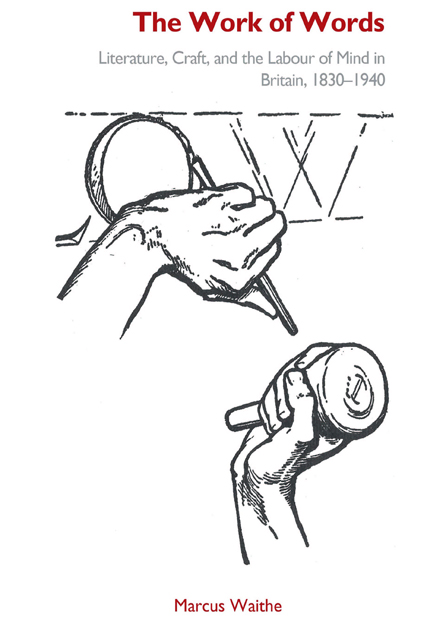5 - Songs of the Forge
Published online by Cambridge University Press: 13 April 2023
Summary
Building on connections previously discussed between poetry and weaving, this chapter addresses an equally searching comparison of writing to forge labour, one that prioritises matters of process over what Jean Baudrillard calls ‘productive finality’, but which also registers forms of visibility. Amidst the symbology of craftsmanship, the figure of the blacksmith stands out because of an enhanced power to signify and represent. Ruskin’s note on the twenty-first capital of the Doge’s Palace in Venice conveys something of this. He describes its eighth side as showing a figure who ‘[…] beats with a large hammer on a solid anvil’ under the caption ‘FABER SUM’ [I am a maker] (10:420). The Latin ‘faber’ serves a broad purpose in this respect, in that it elides the difference between ‘smith’ and the wider category, ‘maker’. This ability to speak of labour in general also influences political representations. Walt Whitman, for one, splices metallurgic figures with democratic politics, utopian com-munalism, Eastern mysticism, and erotic life, in visions of ‘[b]lacksmiths with grimed and hairy chests’. Re-domesticating this American trajectory, the radical English poet and campaigner, Edward Carpenter, sets his Towards Democracy (1883) to the ‘solid beat of steam and tilt-hammers’, while praising ‘[l]overs of all handicrafts and of labor in the open air’, chief among them ‘[t]he blacksmith’. For Carpenter, as for Morris, the image of the blacksmith becomes a symbol of socialism, a rallying cry for a newly conceived aristocracy of labour. As previously noted, Walter Crane puts his depiction of a smith fashioning a sword to a revolutionary use as the emblem on the front of a Socialist League membership card [Figure 5.1].
While the blacksmith’s ability to signify at the general and political level guarantees a prominence and potency, the questions entailed by the medium of metal are not superficial either, whether understood technically, theoretically or representationally. This applies equally to the forge’s role as an interface between manual and literary intelligence. Widely read on both sides of the Atlantic, Henry Wadsworth Longfellow’s ‘The Village Blacksmith’ (1841) epitomises the revived image of the forge as a place of dignified, but also intelligent, labour.
- Type
- Chapter
- Information
- The Work of WordsLiterature, Craft, and the Labour of Mind in Britain, 1830-1940, pp. 141 - 180Publisher: Edinburgh University PressPrint publication year: 2023



